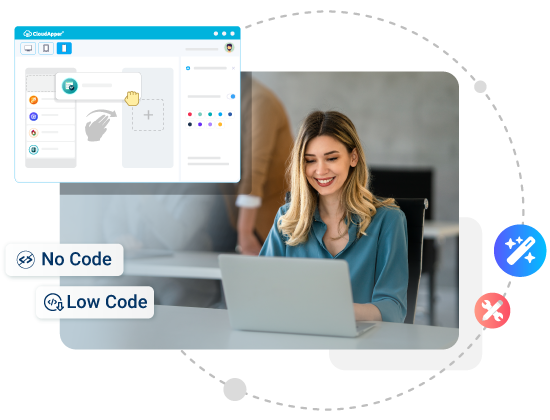Table of Contents
Businesses need applications to operate, this is the reality in the current business environment where companies are embracing digitization to gain a competitive advantage. Whether it is a facility management system that will ensure your factory is optimized to meet business requirements, or a customer relationship management system that helps your company stay ahead of a customer’s needs.
However, for some companies, especially small and medium enterprises, there may not be a cost-effective system that fulfills all of their business’s needs. In these situations, your company will either need to build an application in-house or source the expertise of an experienced developer to build the application for you.
We will unpack the pros and cons of building an application in-house versus hiring a developer so you can decide which would be the most suitable option for your company.
Sourcing Application Developers
Pros
One of the main benefits of hiring a developer to create your business system is their specialized skill. Developers will be able to provide insight into aspects your company may not have taken into consideration. For example, ensuring the new system integrates with your business’s existing legacy systems. The informed perspective provided by developers will also result in a better application.
Cons
The main issue companies face when selecting a skilled developer is the lack of available developers. This coupled with the rising cost of hiring a developer to create your applications means that for many companies this is not a feasible option. It is also important to note that if your business has a strict deadline then an outsourced developer may not be the best solution. This is because delays often occur during the development of an application, due to the many variables involved.
Building Applications In-house
Pros
Building an application in-house is often easier. This is because your employees understand what the problem is within your company and what needs to be solved. Your employees have intimate knowledge of the issues your company is facing and will have solutions more suited to your company. Another benefit of having in-house developers working on your business’ applications is that they are more likely to be able to deliver based on the agreed upon timetable.
Cons
While building an application in-house with your company’s employees may be more cost-effective than hiring a team of developers, it is still very expensive and often not an option for small and medium-sized businesses. If your business can assign an employee to create an application, it must be noted that this employee will have to focus solely on this complex task. This means that this will not be appropriate for small companies with only a few IT employees. IT department dependency is another challenge that companies will face when building their application internally, especially if the employee who developed the application is also the employee in charge of executing its processes.
No-code platform
An important point to note about building an application in-house is that this allows companies to implement a no-code platform, such as CloudApper. No-code platforms address many of the disadvantages businesses will face when developing an application to meet their needs.
While using your business’s IT department resources is more cost-effective than outsourcing your application to a developer, it is still not feasible for many companies. At $10 per user per month, companies can implement the CloudApper no-code platform, making it the most cost-effective solution for all companies no matter their size.
No-code platforms also reduce IT department reliance. Your company no longer has to assign scarce IT resources to create an application. With CloudApper, anybody can create applications. The system uses a drag and drop system to create applications in a few simple to follow steps. This means that anybody can create an application, even if they do not know how to write a single line of code. A major benefit of having a system that can be operated by all employees means that your company will reduce the burden and reliance placed on IT departments. Encouraging employees to take the initiative in the process.
Conclusion
Building versus buying apps is a conundrum for many companies. Both are resolutions to a company’s need for applications, however, when we take into consideration the pros and cons, we can note that building an application may be more suitable for most companies due to the use of a no-code platform. With this in mind, if your company is looking for a no-code platform to create your next application why not try CloudApper. Click here to contact us and experience all the benefits of a no-code platform.
What is CloudApper AI Platform?
CloudApper AI is an advanced platform that enables organizations to integrate AI into their existing enterprise systems effortlessly, without the need for technical expertise, costly development, or upgrading the underlying infrastructure. By transforming legacy systems into AI-capable solutions, CloudApper allows companies to harness the power of Generative AI quickly and efficiently. This approach has been successfully implemented with leading systems like UKG, Workday, Oracle, Paradox, Amazon AWS Bedrock and can be applied across various industries, helping businesses enhance productivity, automate processes, and gain deeper insights without the usual complexities. With CloudApper AI, you can start experiencing the transformative benefits of AI today. Learn More

















